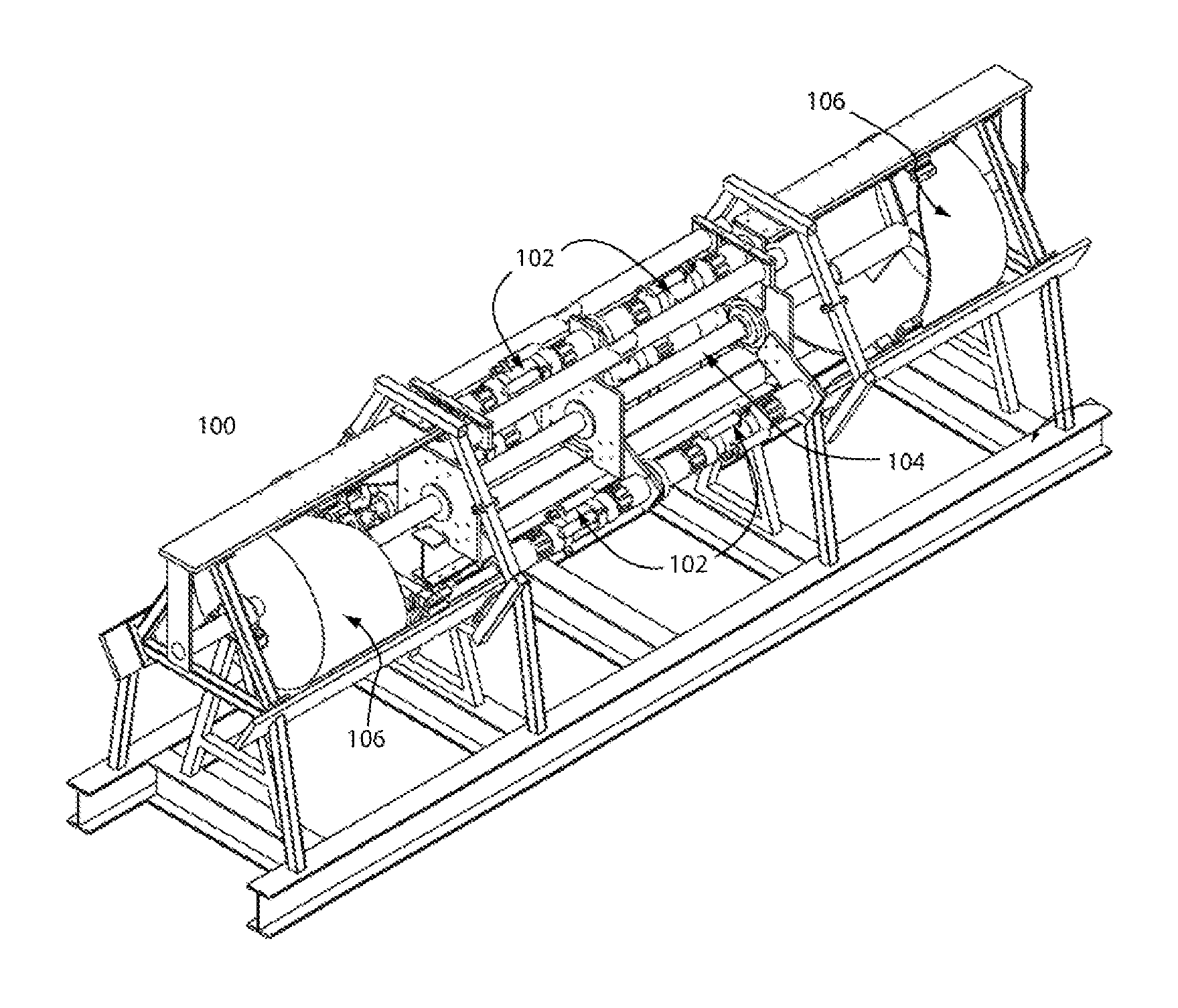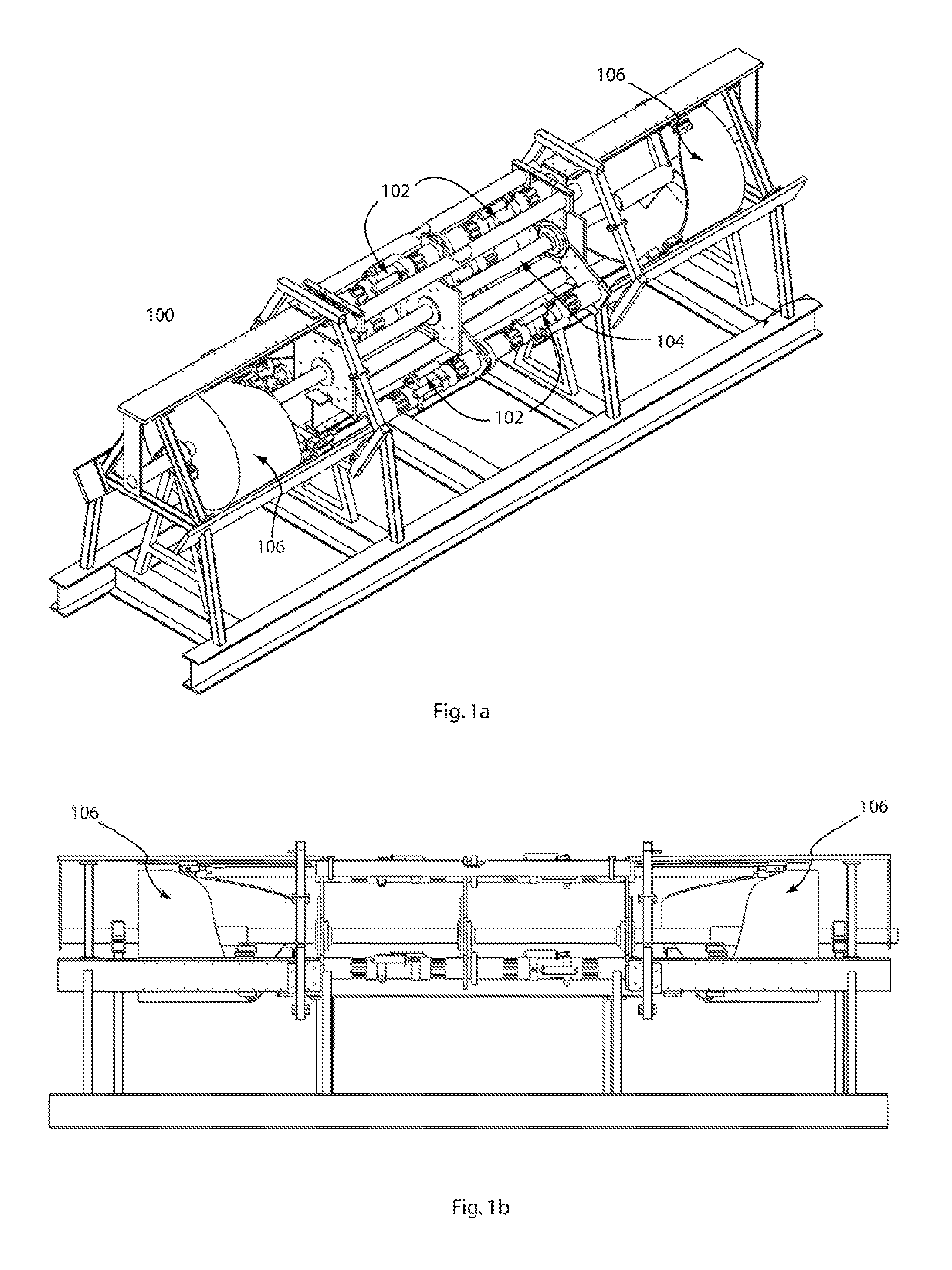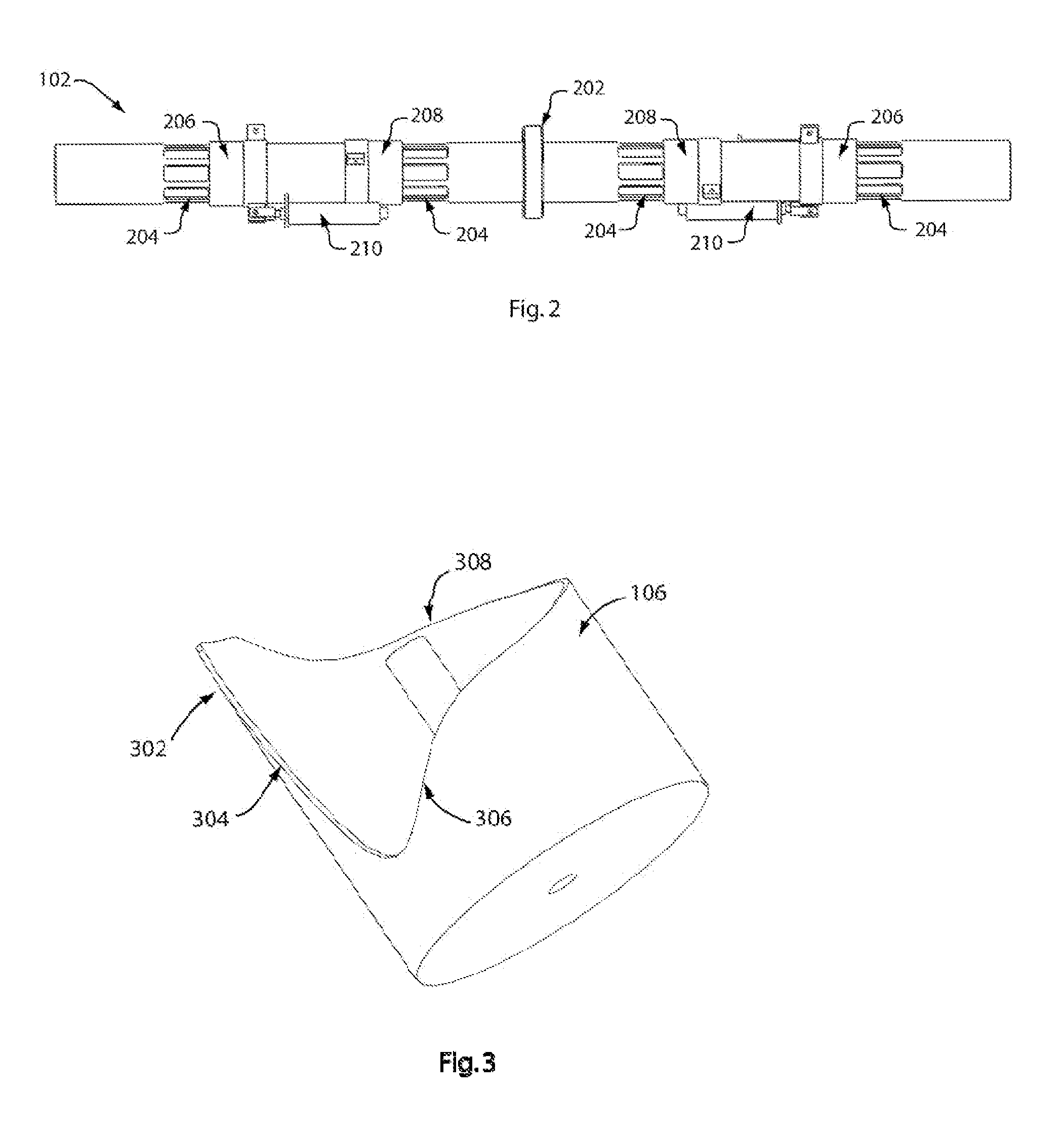High efficiency engine for ultra-high altitude flight
a high-efficiency, engine technology, applied in the direction of machines/engines, mechanical equipment, non-fuel substance addition to fuel, etc., can solve the problems of increasing the weight and complexity of the intercooler heat exchanger system, adding substantial weight to the engine, etc., to reduce heat transfer losses, minimize surface-to-volume ratio, and maximize flame front contact area
- Summary
- Abstract
- Description
- Claims
- Application Information
AI Technical Summary
Benefits of technology
Problems solved by technology
Method used
Image
Examples
Embodiment Construction
Ultra-High Altitude Barrel Engine
[0037]FIGS. 1-4 illustrate the details of the preferred embodiment of the engine. FIG. 1a shows an isometric view of the inventive engine 100, showing all mechanical components and supporting superstructure. The radial symmetry of engine 100 is also evident. For simplicity, only three cylinders 102 of a plurality of cylinders are shown disposed in the central portion of engine 100, and coaxially oriented with central shaft 104 and positioned at 120° intervals around central shaft 104. The dual rotary end cams 106 are shown mounted at each end of central shaft 104. Each of the cylinders 102 contains a pair of opposed pistons (not visible) that are coupled to the end cams 106 at each end through piston rods.
[0038]FIG. 1b shows a frontal view of the same engine 100, showing the bilateral symmetry of the dual-cam engine. Each cam 106 is a mirror image of the other, whereby their cam profiles are aligned in opposition so that the pistons act in phase duri...
PUM
 Login to View More
Login to View More Abstract
Description
Claims
Application Information
 Login to View More
Login to View More - R&D
- Intellectual Property
- Life Sciences
- Materials
- Tech Scout
- Unparalleled Data Quality
- Higher Quality Content
- 60% Fewer Hallucinations
Browse by: Latest US Patents, China's latest patents, Technical Efficacy Thesaurus, Application Domain, Technology Topic, Popular Technical Reports.
© 2025 PatSnap. All rights reserved.Legal|Privacy policy|Modern Slavery Act Transparency Statement|Sitemap|About US| Contact US: help@patsnap.com



